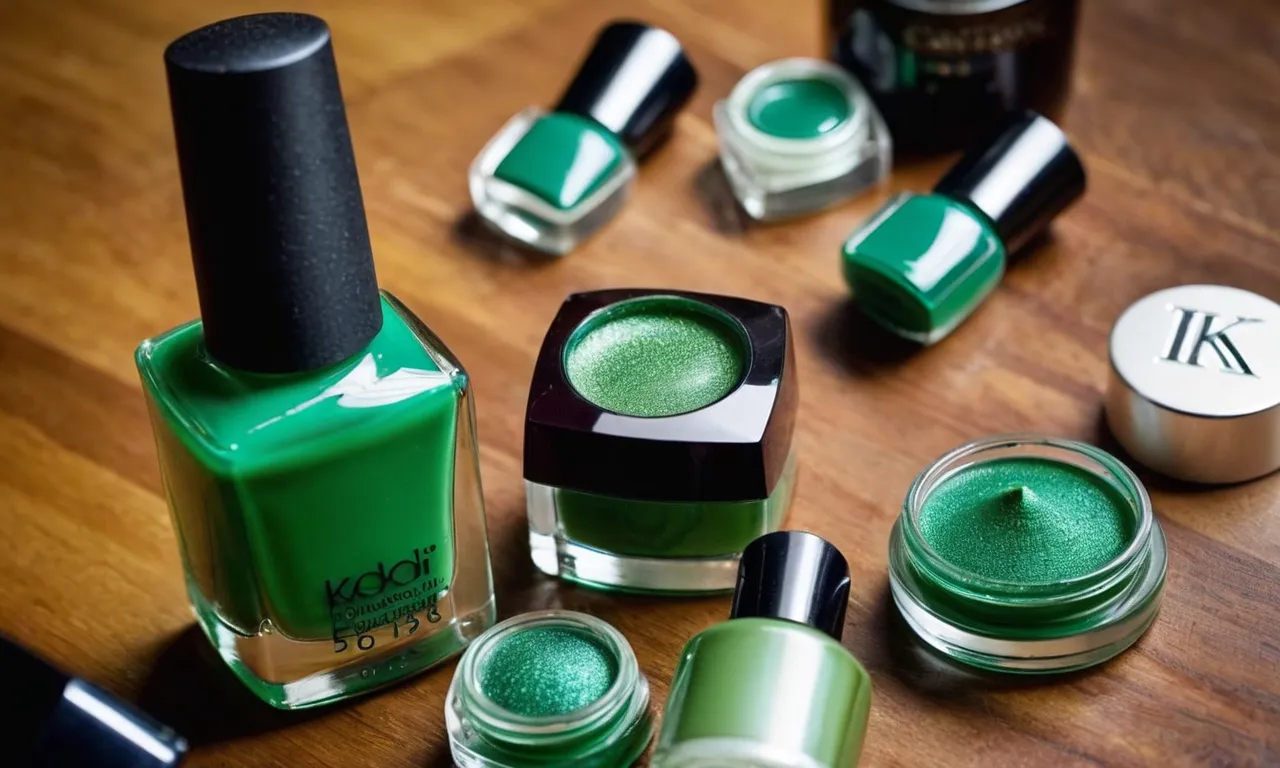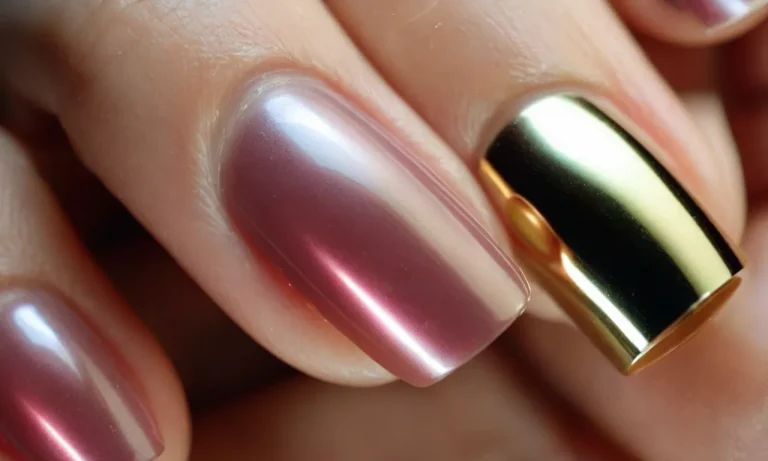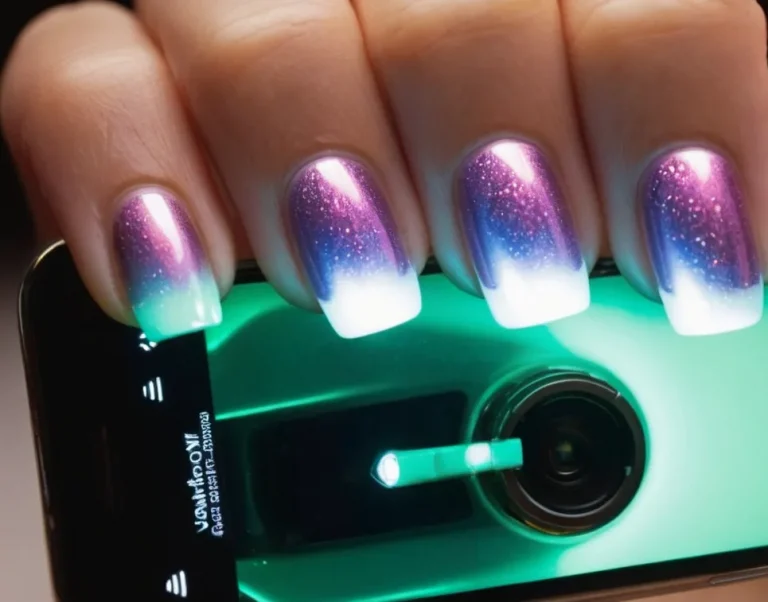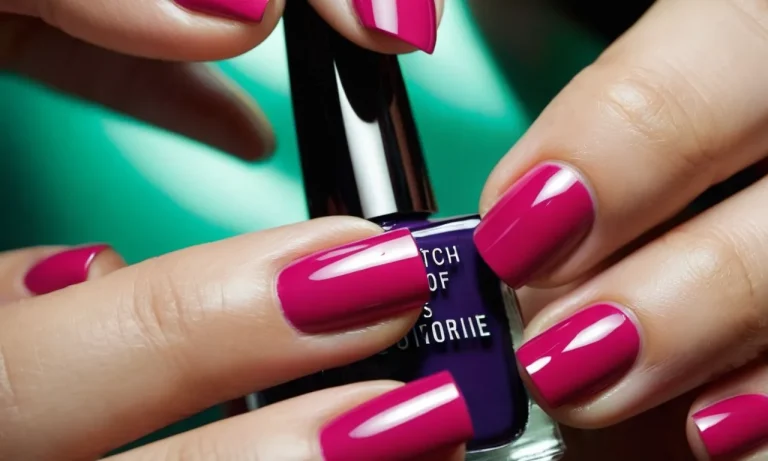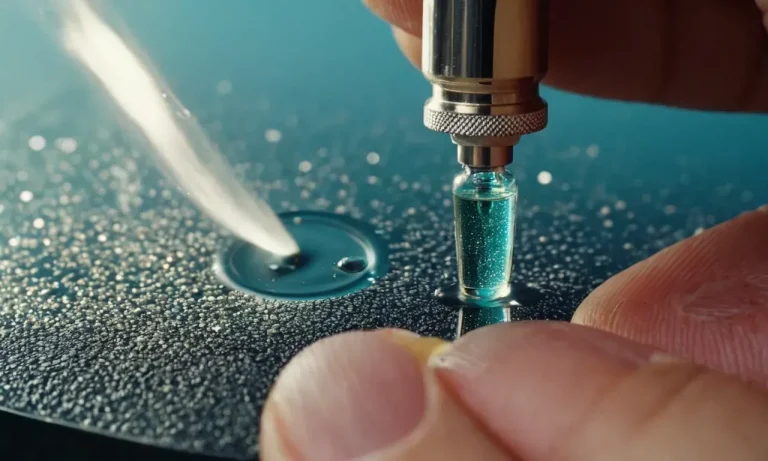Why Are My Nails Turning Green? Causes And Treatments
If you’ve noticed a greenish tint in your fingernails or toenails, you’re not alone. Green nails are a common issue that can have many different causes.
If you’re short on time, here’s a quick answer to your question: Green nails are usually caused by a buildup of the pigment melanin, certain nail polishes, infections like pseudomonas, or staining from metals, medications, or nail products.
In this comprehensive guide, we’ll explore all the potential reasons your nails may be turning green. We’ll also provide tips to help restore your nails to their natural, healthy color.
What Causes Green Nails?
Green nails can be alarming at first glance. However, in most cases, it is harmless. There are several potential causes of green nails:
Pseudomonas Bacterial Infections
Pseudomonas bacteria naturally live on the skin and can infect the nails if the cuticles are damaged, or the nail beds are moist, injured or ill-fitting shoes cause trauma. This infection causes green/black discoloration of the nails with a foul odor. It requires antibiotics to treat.
Fungal Infections
Fungal infections like athlete’s foot can spread to the toenails and cause green nails. The nails may thicken and crumble too. Oral antifungal medications are required for several weeks to eradicate it.
Using Nail Polish, Gels, or Acrylics
Dark green, blue, or black nail polish can stain the nails green if left on for too long. Similarly, nail gels and acrylics, when applied for prolonged periods, may also discolor the nails green/blue due to chemical reactions. Acetone remover can help remove the stains.
Chemical Exposure
Prolonged chemical exposure at work can also stain the nails green. Chemicals containing copper or chromium compounds like household cleaners are common culprits. Wearing gloves provides protection.
Medications
Certain antibiotics like ciprofloxacin, and medications like chemotherapy drugs can rarely cause green/black discoloration of nails as a side effect.
Age and Thickness of Nails
With age, nails tend to thicken and develop green/yellow discoloration due to slower nail growth. Older adults are more prone to this harmless pigmentation.
Melanin Pigment
In dark-skinned individuals, excess melanin production can cause green/brown nails. It is harmless and more visible on thicker nails.
Trauma and Bruising
An injury like jamming a toe can cause blood under the nail, appearing as green/black discoloration. It grows out with the nail over months.
Diagnosing the Cause of Green Nails
Consulting a Doctor or Dermatologist
If you notice any green discoloration in your nails, it’s important to consult a doctor or dermatologist. They can examine your nails and determine the underlying cause. Sometimes green nails may indicate a harmless condition like staining from nail polish or pseudomonas bacteria.
But in other cases, it could signal a fungal nail infection or more serious systemic illness. A proper medical evaluation is the best way to diagnose what’s causing the green tint.
During the appointment, the doctor will ask about your symptoms, medical history, and any recent exposures or lifestyle factors that could explain the change in your nails. They may use a special lamp to check for fungal elements. Swab or clipping samples might be taken for lab tests.
These tests can identify bacterial or fungal causes of green nails. Your doctor may also order blood work or other tests if they suspect an internal problem like liver disease.
Getting an accurate diagnosis from a medical professional is crucial before trying to treat green nails on your own. Proper treatment depends on the underlying cause. With their expertise, doctors can prescribe antifungal medications, antibiotics, or other appropriate treatments to clear up green discoloration from nails.
Looking for Signs of Infection
Inspecting your green-tinted nails closely can provide clues about a possible bacterial or fungal infection. Here are some signs to look out for:
- Crumbly, brittle, or thickened nails – This can indicate fungal infection.
- Green color starting at the base and spreading to the tip – Also points to fungus.
- Green hue with foul odor – May signal pseudomonas bacteria.
- Greenish-black discoloration – Can mean bacterial infection.
- Green color on nails of fingers and toes – Fungus likely if affects multiple nails.
If you notice any of these features along with the green color, it’s wise to see a dermatologist promptly. Leaving an infection untreated can allow it to worsen and spread. Medication will be needed to clear up bacterial or fungal green nails.
Considering Recent Changes
Green nails sometimes develop after recent exposures to substances that can stain nails or alter nail bed texture. Think back to any new products, foods, or activities you engaged in shortly before noticing the color change:
- Did you apply a dark green nail polish or acrylics? – Pigments may stain nails.
- Were you gardening and handling plants? – Chlorophyll can discolor nails.
- Did you take any new medications? – Certain drugs cause green nails.
- Did you injure the nail? – Trauma allows staining and infections.
- Did you swim in a pool? – Chlorine can alter nails.
If you can identify an obvious recent source for the green color, try eliminating the exposure. For instance, remove dark polish or avoid gardening without gloves. This may allow normal healthy nails to grow back over time. But if the color remains even after changing habits, see a doctor.
How to Treat and Prevent Green Nails
Treating Underlying Infections
If a bacterial or fungal infection is causing the green nails, it’s important to properly treat the infection. Oral or topical medications may be prescribed by a doctor to clear fungal infections of the nail bed or cuticle area (American Academy of Dermatology).
Getting the right treatment can help resolve symptoms and prevent recurring infections that lead to green nails.
Avoiding Harsh Chemicals and Dyes
Exposure to certain chemicals, like hair or laundry dyes, or other irritants can sometimes stain nails green. Wearing protective gloves when using harsh household cleaners or dyes can help prevent green discoloration (Medical News Today).
It’s also wise to limit direct exposure to chlorinated pools or chemicals in manicure supplies that may seep into the nail bed and cuticle area over time.
Using Topical Treatments
Gently scrubbing nails with a fingernail brush and an antibacterial soap may help remove superficial green stains in some cases. An over-the-counter liquid antiseptic containing chlorhexidine gluconate may also help clear up infected green nails when applied directly to the affected area.
If these methods don’t remove the discoloration, a dermatologist can prescribe stronger medicated nail creams or oral medications to clear up stubborn nail fungal infections.
Maintaining Nail Health
Practicing good nail hygiene can help prevent green nails in the first place. Trim nails regularly and file down thick edges to prevent buildup of fungi or debris. Moisturize cuticles after washing hands to keep skin healthy and resilient against infections.
Sanitize nail tools before using them with a disinfectant spray or by cleaning with soap and hot water for 20 seconds. Avoid prolonged contact with chemicals that can seep into nails over time when possible.
Treating nail fungal infections properly when they occur is also key to stopping recurring issues with discolored or distorted nails.
When to See a Doctor
If Nails Remain Green After Lifestyle Changes
If your nails remain green or discolored even after improving hygiene habits, avoiding exposure to chemicals, and using natural remedies, it’s a good idea to see your doctor. Persistent green nails can indicate an underlying medical condition that needs proper diagnosis and treatment.
See your doctor if the green tint lingers for more than 2 weeks despite your best efforts. They can perform tests to determine the exact cause, such as a fungal infection, bacteria, or a more serious condition like melanoma (skin cancer).
Early intervention is key, as leaving certain disorders untreated can allow them to worsen over time and spread to other nails. Your doctor may prescribe medicated creams, oral medications, or other treatments tailored to your specific diagnosis.
If There are Signs of Infection
See your doctor promptly if your green nails are accompanied by signs of infection, such as:
- Redness, swelling, warmth, or tenderness around the nails
- Pus or foul-smelling discharge from under the nails
- Nails separating from the nail bed
- Pain or throbbing in the fingertips
These symptoms suggest a bacterial or fungal infection that requires medical treatment. Your doctor will examine your nails and may scrape nail samples for laboratory testing. They can then prescribe oral or topical antibiotic or antifungal medication to clear the infection.
Ignoring an infected green nail could allow the problem to worsen and possibly spread to other fingers and toes. Prompt treatment helps resolve symptoms faster and prevents complications like permanent nail deformities.
For a Formal Diagnosis
It’s wise to see your doctor if you’re unsure of what’s causing your green nails. They can examine your nails and ask about your medical history to pinpoint the likely cause.
Diagnostic tests may include:
- Fungal culture of nail clippings
- Bacterial culture to identify infectious organisms
- Blood tests to check for underlying conditions
- Biopsy for suspicious lesions to test for melanoma
Based on test results, your doctor can provide a definitive diagnosis and recommend appropriate treatment. This may include antifungal pills, antibiotics, medicated nail polish, laser therapy, or surgical removal of part of the nail.
Getting an accurate diagnosis from your doctor ensures you receive treatment tailored to the specific cause of your green nails. This gives you the best chance of restoring your nails to a healthy appearance.
Coping with Green Nails
Using Temporary Nail Polish
If you want to hide green nails temporarily, using a nail polish can help. Opt for an opaque shade in a color you enjoy, which will disguise the underlying green tint as the polish chips. Reapply the nail polish every few days to keep the green color concealed.
Using a base coat underneath your polish can also help block stains from showing through. Just remember that nail polish doesn’t treat the underlying cause of green nails.
Trying a Nail Whitening Treatment
You can find specialized nail whitening treatments at beauty supply stores or online. These treatments use ingredients like hydrogen peroxide or gentle acids to lift stains from the nail plate and make them appear whiter.
However, because the green color tends to develop underneath the nail, surface treatments may not fully remove stains. But trying an at-home whitening product for a few weeks can lighten green coloring.
Focusing on Overall Health
Since green nails often result from internal health issues, focusing on improving your overall wellness can keep nails looking cleaner. Make sure to maintain good hygiene habits, use glove protection when exposed to chemicals or dyes, and eat a balanced diet rich in nutrients.
Stay hydrated, exercise regularly, and get enough sleep. As your health improves, nails should grow in stronger and free of stains.
You can also visit your doctor to check for underlying illness if green nails persist. Getting bloodwork done and having any deficiencies corrected could support nail health.
Conclusion
Green nails can be alarming at first, but in most cases the discoloration is harmless. With some simple lifestyle changes and paying attention to nail health, you can get your nails looking natural again.
If you’ve tried various treatments and home remedies without success, make an appointment with your doctor. They can diagnose any underlying issues and provide specialized treatments to restore your nails.
With patience and persistence, you can troubleshoot what’s causing the green tint in your nails and get back to showing off beautiful, healthy nails.

